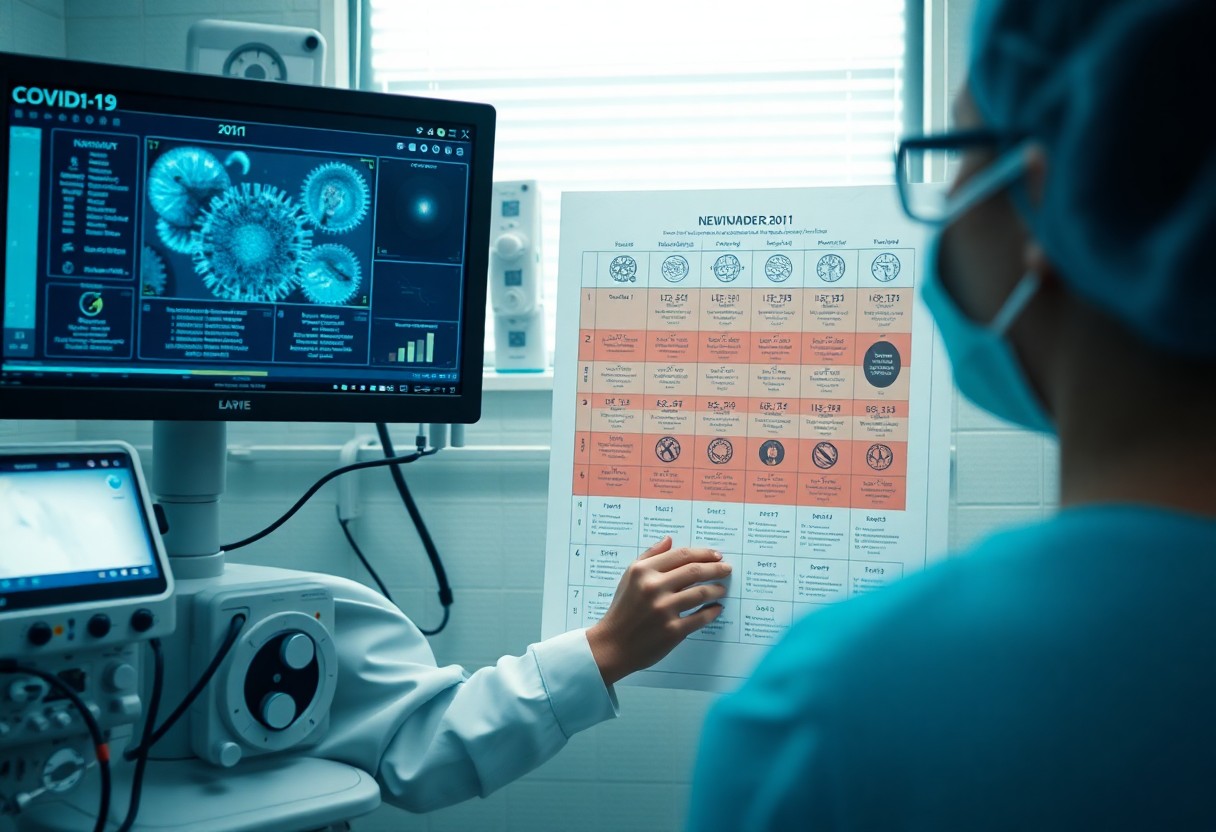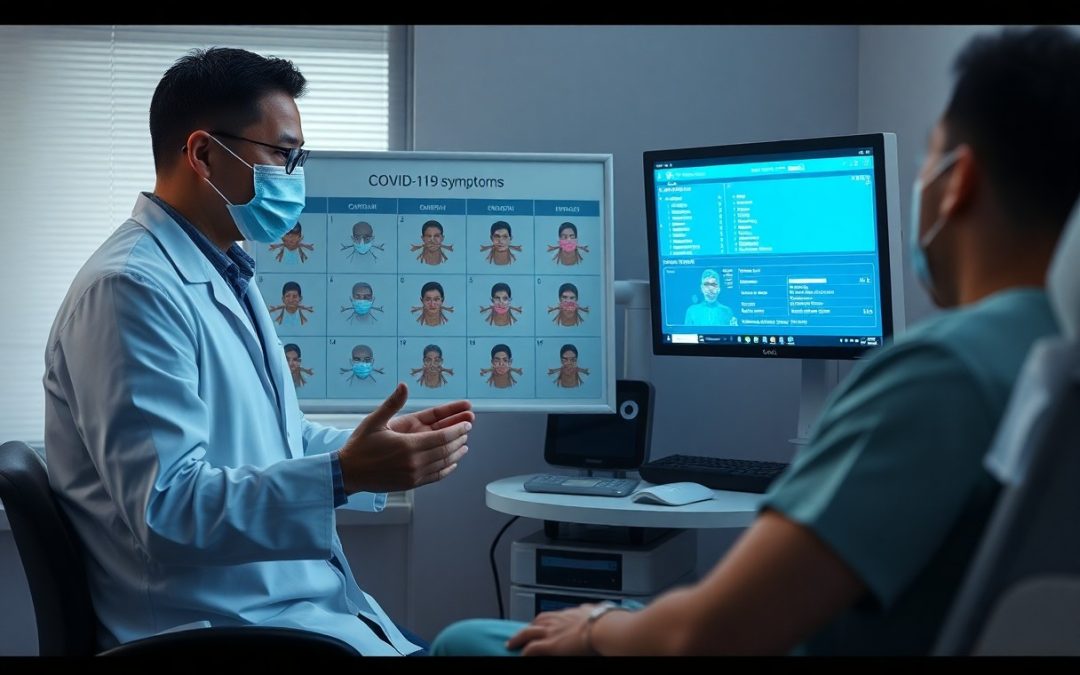It’s important for you to stay informed about the latest developments in COVID-19, especially the new variant NB.1.8.1. You should know that the symptoms of this variant appear to be similar to previous strains, meaning you might experience familiar signs of infection. While this variant may be more transmissible, experts do not expect an increase in severe illness, which is a positive for your health. Staying aware of symptoms can help you take timely steps to protect your health and prevent further spread.
Identifying the Signs: Symptoms Common to NB.1.8.1
The symptoms caused by NB.1.8.1 largely mirror those you’ve likely seen with earlier omicron variants. You might experience a range of mild to moderate symptoms, including respiratory discomfort and systemic issues. Despite higher transmissibility, this variant hasn’t shown significant increases in severe outcomes. Pay attention to your body’s signals and take precautions if you notice symptoms developing, especially if you belong to a high-risk group or live with vulnerable individuals.
Respiratory Symptoms: Cough, Shortness of Breath, and More
Persistent cough remains a common symptom, often accompanied by mild shortness of breath or chest tightness. You may also notice a sore throat or nasal congestion resembling a cold. Unlike earlier variants, loss of taste or smell seems less frequent with NB.1.8.1, but respiratory irritation continues to be at the forefront. These symptoms can disrupt daily activities, and if you experience difficulty breathing, seek professional health care promptly.
Systemic Symptoms: Fatigue, Fever, and Body Aches
Fatigue tends to hit early and can last for several days, sometimes coupled with low-grade fever and mild-to-moderate body aches. These systemic symptoms reflect your immune system’s response to fighting the virus. The fever often remains below 102°F, yet you might feel chills or sweats as your body works to regulate temperature. Recognizing these signs early helps you manage rest and hydration effectively to support recovery.
Additional reports indicate that systemic symptoms like fatigue and body aches might be more pronounced in certain populations, including those with waning immunity or underlying conditions. While these symptoms generally resolve within a week, they can impact your ability to perform routine tasks. Incorporating gentle movement when possible and staying well-hydrated have shown benefits, alongside familiar over-the-counter remedies to alleviate discomfort. Keeping track of symptom progression is key to determining when to escalate care.

Protecting Yourself: Preventive Measures and Vaccination
Vaccination remains a leading defense against NB.1.8.1, especially as this variant shows increased transmissibility. Coupled with sensible preventive practices like mask-wearing and avoiding crowded indoor settings, these steps help you reduce your risk of infection and limit the spread to those around you. Staying informed about local case rates and following guidance tailored to your risk factors ensures you remain a step ahead, even during potential summer surges.
Importance of Vaccination Against NB.1.8.1
Being up to date with COVID-19 vaccines offers substantial protection against severe illness from NB.1.8.1. Since this variant stems from the omicron lineage, current vaccines still target it effectively, reducing hospitalizations and complications. For people at higher risk, vaccination paired with booster doses strengthens immunity, especially during periods when natural protection might wane.
Recommended Practices for Reducing Transmission
Wearing high-quality masks in crowded or indoor spaces, maintaining good ventilation, and limiting close contact with others when community spread is high can significantly decrease your chances of catching or spreading NB.1.8.1. These measures work best when combined consistently, especially around vulnerable individuals.
For example, studies indicate that N95 or KN95 masks filter out over 95% of airborne particles, offering superior protection compared to cloth masks. Opening windows or using air purifiers lowers viral load indoors, making transmission less likely. Avoiding large social gatherings during peak infection periods also prevents rapid community spread, giving you and your loved ones an added layer of defense.
Understanding Severity: Comparing NB.1.8.1 to Previous Variants
| NB.1.8.1 Characteristics | Previous Variants |
|---|---|
| Potentially more transmissible, fueling summer case surges | Varied transmissibility; some caused significant outbreaks |
| No clear increase in severity according to WHO surveillance | Some prior variants linked to higher hospitalization or mortality |
| Vaccine protection expected to be largely maintained | Vaccine efficacy fluctuated depending on variant mutations |
| Hospitalization trends show regional variability, with some rise in Asia | Hospitalization trends varied by location and population immunity |
Current Consensus on Illness Severity
The World Health Organization’s routine surveillance reports that NB.1.8.1 does not show signs of increased illness severity compared to previous variants. While some regions, particularly in Asia, report more hospitalizations, experts like Dr. Amy Edwards emphasize that the mutation itself isn’t driving more severe disease overall. You can expect symptoms and outcomes to resemble those experienced in recent COVID-19 waves, especially with widespread immunity and ongoing vaccinations reducing the risk of severe illness.
Trends in Hospitalization Rates
Hospitalization rates linked to NB.1.8.1 have shown some increases in parts of Asia, yet these trends haven’t uniformly appeared worldwide. The WHO’s data suggests that overall, this variant is not causing more severe cases that require hospital care compared to past omicron subvariants.
Several factors may influence hospitalization trends, including local vaccination coverage, population immunity levels, and healthcare infrastructure capacity. For example, in areas with lower vaccine uptake or waning immunity, hospitals might see a rise in admissions during NB.1.8.1 surges. These variations highlight the importance of maintaining your vaccination and taking precautions to protect yourself, especially if you belong to a high-risk group.

The Long-Term Implications of NB.1.8.1
The emergence of NB.1.8.1 raises questions about how COVID-19 may continue evolving and influencing public health. While current data suggests this variant isn’t causing more severe illness, its increased transmissibility could strain healthcare systems during seasonal surges. You might see recurring waves driven by such variants, especially as immunity wanes over time. Staying informed and maintaining protective measures, including vaccination, remain key strategies to mitigate potential long-term impacts.
Potential for Future Variants and Seasonal Surges
NB.1.8.1 is part of a larger pattern where new variants often emerge before seasonal spikes, mirroring trends from previous years. As immunity from prior infection or vaccination declines, variants with enhanced transmissibility gain an edge, leading to surges in cases. You should anticipate similar waves moving forward, especially in late spring or summer, underscoring the importance of monitoring infection rates and keeping vaccinations current.
The Importance of Ongoing Surveillance and Research
Continuous monitoring of NB.1.8.1 and related variants offers critical information about virus behavior, transmission patterns, and vaccine effectiveness. Surveillance data from regions like Asia—where increased hospitalizations have been reported—helps inform public health responses elsewhere. Research into mutations also guides updates to vaccines, ensuring they remain aligned with circulating strains and protect you against severe outcomes.
Genomic sequencing efforts worldwide track mutations in NB.1.8.1 to detect changes that could affect transmissibility or severity. For example, collaboration between the WHO and local health agencies has enabled rapid identification of this variant’s spread without observing heightened clinical severity. Additionally, vaccine efficacy studies focus on whether existing immunizations continue neutralizing NB.1.8.1 effectively, informing recommendations on booster shots. This sustained surveillance offers early warnings to adjust strategies and helps you stay ahead of emerging risks.
Final Words
Conclusively, the symptoms of the new COVID-19 variant NB.1.8.1 are similar to those of previous strains, so you should watch for familiar signs if you feel unwell. Protecting your health means taking precautions like staying home, wearing a mask, and avoiding crowded places, especially to safeguard those most vulnerable around you. Staying informed about the symptoms and acting responsibly helps you manage your health effectively amid ongoing virus changes.
FAQ
Q: What are the common symptoms of the new COVID-19 variant NB.1.8.1?
A: The symptoms of the NB.1.8.1 variant appear similar to those of previous COVID-19 variants. These typically include respiratory issues such as cough, sore throat, and congestion, as well as fever, fatigue, and body aches. If you experience these signs, it’s advisable to take precautions to avoid spreading the virus to others.
Q: How should someone respond if they suspect they have symptoms from NB.1.8.1?
A: If you show symptoms associated with the NB.1.8.1 variant, it is important to take steps to protect yourself and others. This includes staying home from work or school, wearing a mask in public spaces, and avoiding crowded or enclosed environments. Following these steps helps reduce the transmission of the virus, particularly among those who are at higher risk for severe illness.
Q: Are the symptoms of NB.1.8.1 more severe than earlier variants?
A: Current health observations suggest that despite increased transmissibility, NB.1.8.1 does not cause more severe illness compared to previous variants. Public health officials have not identified signs that this variant leads to higher rates of severe symptoms or hospitalizations. Nonetheless, monitoring symptoms and consulting a medical professional if conditions worsen is advised.


